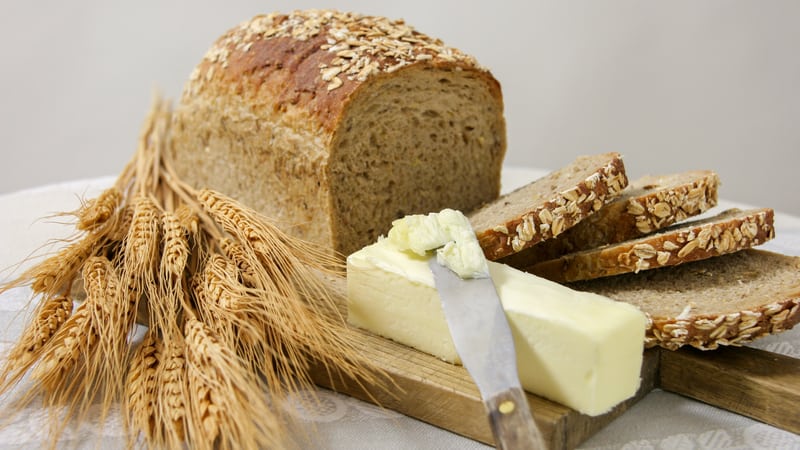Health: 10 Whole Grain Myths and Truths
Little known facts and rumors about this food group

Whole grains are recommended, with few exceptions, to be included as part of a healthful diet. The latest 2020-2025 U.S. Dietary Guidelines for Americans recommend three servings a day of whole grains and point to whole grain amaranth, barley (not pearled), brown rice, buckwheat, bulgur, millet, oats, popcorn, quinoa, dark rye, whole-grain cornmeal, whole wheat bread, whole wheat chapati, whole grain cereals and crackers, and wild rice as important, nutrient-dense sources of whole grains.
Despite these recommendations and overwhelming evidence that including whole grains in your diet can be beneficial to your health, 98% of Americans fail to meet the three-servings-a-day recommendation. That shortfall may be partly due to several myths about whole grains that continue to circulate. Here, EN identifies common whole grain myths and sets the record straight.
Whole Grain Myth 1: Whole grains cause inflammation in the body.
The truth: We’re not sure where this one started, but it’s simply not true. If anything, the natural phytochemicals found in whole grains act as antioxidants and anti-inflammatory agents.
Myth 2: Whole grains can aggravate or cause diverticulitis.
The truth: Doctors used to advise to steer clear of whole grains and seeds if you’ve been diagnosed with diverticulosis — small, bulging pouches called diverticula that develop in your digestive tract. When one or more of these pouches become inflamed or infected, the condition is called diverticulitis. A high-fiber diet that includes whole grains can actually help decrease pressure in the colon, preventing flare-ups in these pouches.
Myth 3: Whole grains cause bloating.
The truth: This is partially true. The myth is that you shouldn’t eat whole grains because they always cause bloating. Abruptly increasing the amount of fiber you eat from any source can indeed cause gas and bloating. If you currently eat a low-fiber diet and want to increase the amount of whole grains in your diet, increase gradually, so your digestive system has time to adjust.
Myth 4: Only whole grains, not processed grains, provide vitamins.
The truth: The facts behind this myth might surprise you. While processed grains don’t contain the fiber of whole grains, processed breads are fortified with several vitamins and iron and may actually contain more than whole grains, which are not fortified.
Myth 5: Allergic reactions to whole grains are common.
The truth: Actual allergies to whole grains that result in an immune response are uncommon. People with celiac disease can become sick after eating wheat due to the gluten it contains. Celiac disease affects only about one to 2% of the population. Some people may have gluten-sensitivity that causes rumbling down below, but it’s not an allergic reaction.
Myth 6: Only organic, non-GMO whole grains are healthy.
The truth: Well, currently there is no genetically modified wheat commercialized anywhere in the world. Putting non-GMO on a product containing wheat is akin to putting a “cholesterol-free” label on a peach. Never had it in the first place. So, yes organic wheat is GMO free, but so is non-organic wheat. And if you’re choosing organic wheat to avoid gluten, don’t. All wheat contains gluten, organic or not.
Myth 7: Whole grains are loaded with pesticides.
The truth: Glyphosate is a chemical that sometimes is used as to control the timing of wheat harvests, but that practice is not common in the U.S. There is no credible evidence that the use of glyphosphate is common or that it is the cause of digestive problems.
Myth 8: “Multi-grain” or “contains whole grains” on the label is an indication that the product is as high in fiber as a product that says “whole grain” on the label.
The truth: Breads, muffins, rice mixes, and the like that are labeled as “multi-grain” may sound like high fiber, but processed white flour is also a grain. The only way to know if a grain product is made with whole grains, is to read the label carefully. If it says “100% whole grains” then it is. If it says “multi-grain” or “contains whole grains” check the label for the amount of whole grains. You should aim for 48 grams of whole grains a day.
Myth 9: Whole grains contain “anti-nutrients” that are unhealthy.
The truth: Anti-nutrients such as phytate, lectins and oxalates, which are found naturally in wheat and other plant foods, can block the absorption of nutrients. However, while wheat may contain small amounts of anti-nutrients even after being processed and cooked or baked, the health benefits of including whole grains in your diet outweigh any potential negative nutritional effects.
Myth 10: Ordering “wheat bread” in a restaurant is the same as ordering “whole-grain bread.”
The truth: It’s not uncommon when ordering a sandwich or rolls at a restaurant to be asked, “White or wheat?” when in fact the question would make sense only if the waiter had asked “white or whole wheat?” Often the bread may be brown, but that doesn’t mean it’s whole wheat, just that a darker wheat has been used or a coloring has been added that makes it look more healthy.
And for even more wellness tips, visit our health page!
Reprinted with permission from Environmental Nutrition, a monthly publication of Belvoir Media Group, LLC. 800-829-5384. www.EnvironmentalNutrition.com.
©2021 Belvoir Media Group. Distributed by Tribune Content Agency, LLC.

